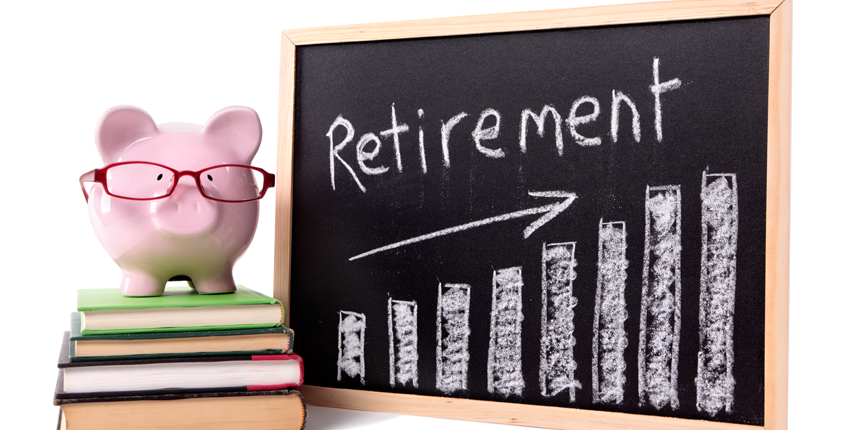Small Business Retirement Plans Part 1: The SIMPLE IRA

After an owner makes heads or tails at the end of the year, they will usually determine whether or not enough money is left over to set up some sort of long term retirement plan within their business. Since there are so many people setting up individual LLC’s and home based side businesses, it’s important to do your due diligence on these types of plans, because this is a huge decision. In part 1 of this series on retirement plans for small business owners, I’ll look at the SIMPLE IRA. Could this be the right type of retirement plan for you?
What is a SIMPLE IRA?
A SIMPLE IRA (Savings Incentive Match Plan For Employees) was first available to small business owners in 2001. A SIMPLE IRA plan is an IRA-based plan that gives small employers a simplified method to make contributions toward their employees’ retirement and their own retirement. Under a SIMPLE IRA plan, employees may choose to make salary reduction contributions and the employer makes matching or nonelective contributions. All contributions are made directly to an Individual Retirement Account or Individual Retirement Annuity (IRA) set up for each employee (a SIMPLE IRA). SIMPLE IRA plans are maintained on a calendar-year basis. See IRS Publication 560, IRS Publication 590 and IRS Notice 98-4 for detailed information on SIMPLE IRA plans.
Don’t let this happen to you: [Free Download] 10 REALLY Stupid Taxpayer Beliefs
Who Are SIMPLE IRA’s Designed For?
SIMPLE IRA’s are designed for businesses with under 100 people (mostly I have used these with businesses under 10 people) and people who have earned at least $5,000 in compensation for the calendar year. A SIMPLE IRA plan can be set up effective on any date between January 1 and October 1, provided the plan sponsor did not previously maintain a SIMPLE IRA plan. Even older workers who are over the age of 70 ½ can still make contributions into a SIMPLE IRA plan. This is what makes this plan so spectacular is that it can be used for both younger and older workers.
How Much Can I Contribute?
An employee may defer up to $12,500 for 2015 (subject to cost-of-living adjustments for later years). Employees age 50 or over can make a catch-up contribution of up to $3,000 for 2015 for a maximum contribution of $15,500 (subject to cost-of-living adjustments for later years).
The salary reduction contributions under a SIMPLE IRA plan are “elective deferrals” that count toward the overall annual limit on elective deferrals an employee may make to this and other plans permitting elective deferrals. After you read that sentence you probably said, “Ted, what does that mean?” I’ll tell you. It means that you could have a small business which nets $8,000 in profit and still make an $8,000 retirement contribution provided your family has the cash flow. In addition to the ‘employee’ contribution, the employer can make a ‘match’ up to 3% dollar for dollar or the employer can make a non-elective contribution of 2% of the employee’s compensation.
More from Ted: [Google Hangout Replay] 6 Last Minute Tax Tips for Business Owners
The majority of these that I have set up over the year typically offer a matching program to force some behavior on behalf of the employee to save. If you have a small business, you can also consider hiring your spouse into the business to gain some additional retirement contribution flexibility.
How Are SIMPLE IRA’s Taxed?
SIMPLE IRA’s fall underneath the same tax rules that you see on regular IRA’s. You typically will be penalized for an early distribution before the age of 59 ½, so you should consider any money you put in the plan as a long-term investment. You can also be penalized for any distribution taken within 2 years of your employer’s initial deposit in your SIMPLE IRA. For employer’s, you cannot set up a vesting schedule on this type of retirement plan as all employer contributions will be immediately vested the day that you make the matching contribution. The SIMPLE IRA plan doesn’t carry any administrative cost beyond the custodial IRA cost if there is one at all.
While I know many people are scrambling to complete their tax returns, it’s never a bad time of year to start planning for your or your employees’ retirement. If you started a new business venture, created a home business, or earned some type of 1099 income now could be a great opportunity to make life ‘SIMPLE’ and get some more dollars set aside.
Be sure to check back for part 2 of this series on the Solo 401k.
[latest_posts header=”More on Tax and Accounting” limit=”” category=”4″]
